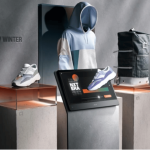Lisbon – Social and live commerce offers opportunities. That was the
message offered by participants in the panel discussion ‘Social and live
commerce: what will it take to break through in the West?’, which took
place on November 15 at the technology conference Web Summit.
There are two things going on in e-commerce right now, argued Sophie
Frères, co-founder and CEO of social commerce software company LiSA (see
box). “The first is that as we spend more time online, we want to find our
drive online,” she noted, and so we gather ourselves in communities we feel
connected to.
About LiSA
“We are basically a 360-degree social commerce suite,” Frères explained.
“That means brands and retailers use our software to provide experiences
like live shopping or shoppable stories on their own e-commerce platforms.
So for example, if you participate in a live shopping event from Marks &
Spencer or Charlotte Tilbury, that is powered by our software.”
“The second is the desire for great experiences. People don’t just want
a transactional online shopping experience, where they click on a picture,
checkout and are done,” Frères continued. We crave engaging and enjoyable
experiences.
“If you want to bring community and experience together, social commerce
could be the answer. It’s about bringing people together in one experience,
whether that’s a livestream, a video or the metaverse, for example. And
seamlessly integrating direct purchase options from that experience. That’s
what social commerce is,” she explained.
Misconceptions and fears in the West regarding social and live
commerce
While live shopping has taken off in China, it has not yet reached the
same level of popularity and acceptance in the West.
“Live shopping has an image problem,” Frères stated. For instance,
people think that live commerce resembles old-fashioned television shopping
or companies believe that it has to be perfect. “With the latter, brand
damage is often what they fear,” Frères said. “Brands typically already
create an awful lot of user-generated content (USG is all content – text,
videos, images, etc, created by people, ed.) which they manage in a great
way. When I engage with them, I point out to them that social and live
commerce are actually not much different: it is also content, but one where
I enrich the experience with shopping opportunities and interactivity. Once
they realise that, it often becomes a lot easier.”
The speakers think social and live commerce is at the beginning of its
breakthrough in the West. Especially as social and live commerce can bring
a lot to (fashion) businesses.
The potential of shoppable videos, stories and livestream shopping
“(British department store retailer) Marks & Spencer is seeing
incredible results,” Frères told the audience. “Namely a consistent 15
percent increase in average order value. In addition, people coming to the
live shows are visiting the website three times more often per month than
typical online customers,” she continued. “And (renowned beauty brand)
Charlotte Tilbury sees conversion rates as high as 37 percent.”
Social and live commerce can also be a tool for attracting new
customers, said Eamonn Carey, general partner of international investment
firm Tera Ventures. “(US beauty brand) Avon, for example, has social
sharing rates of 43 percent,” he noted. “What does this mean now? If 100
people attend a live show and the presenter asks them to invite a friend,
up to 43 percent of the audience will do so without any incentive (e.g. a
discount). These people love the experience and want to share that
experience with a friend. That’s zero dollars for customer acquisition,”
Carey said.
Frères also shared that return rates in live shopping are 50 percent
lower than normal return rates online, because people learn a lot about the
products during live shopping.
The importance of community-driven content, the authenticity factor
According to Frères, the key to success is “community first content
creation”, she said when asked. “Marks & Spencer organises live shows
almost daily,” she noted. “These shows are organised by in-house stylists,
buyers and brand experts. The in-house community is used to create content.
These people are not trained to be in front of the camera or do product
demonstrations. As a result, the experience is actually authentic.
Sometimes something goes wrong, but people don’t mind that at all.”
“Audiences appreciate the authentic connection,” concurred speaker Tony
Wang, co-founder and CRO of real-time engagement platform Agora.io. “Live
is a bit of a misleading term,” he added. “Because what we are actually
talking about is the interactive, social element in real time. That the
audience can participate in that event. And that’s the key.”
‘Start simple’
For companies looking to start with social and live commerce, Frères has
another tip. “In the beginning, it’s not about attracting a large audience.
It is about exploring what works for your community. So start very simply,”
she advised. “Live shopping is something to experiment with, but it can
also be as simple as bringing Instagram content to your website and making
that interactive and engaging. Start small, find out what your audience
loves and then scale up.”
Web Summit took place from 14 to 16 November in Lisbon, Portugal.
.
2023 at the Altice Arena in Lisbon, Portugal. Credits: Photo by Sam
Barnes/Web Summit via Sportsfile



